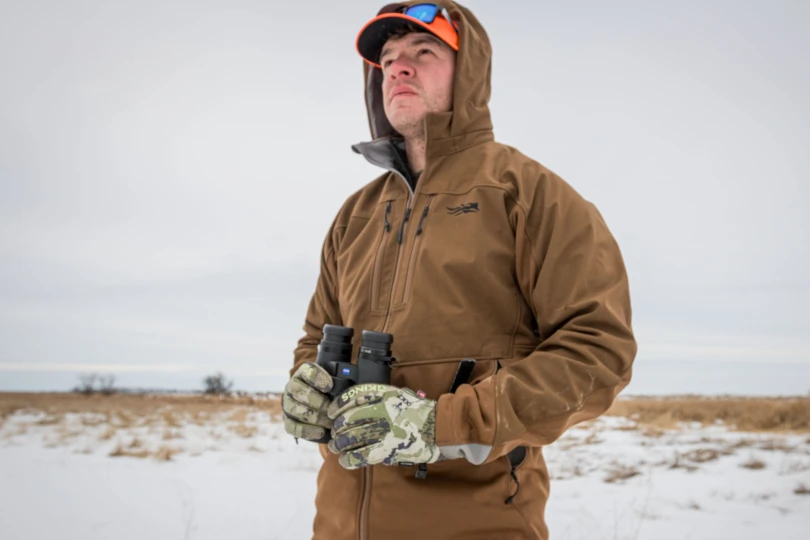Known for his monster-mile backpacking expeditions, including the Sea-To-Sea Trail, Great Western Loop, and a circumnavigation of Alaska, Andrew Skurka is a world-renowned outdoorsman.
To hike or backpack anywhere in three-season conditions, I propose that a total of just 13 items of clothing are needed. I call them the Core 13.
To be sure, there are thousands of options, and clothing is the subject of much marketing hyperbole in the outdoors world. Identifying the 13 was not an easy task.
But after years spent hiking and exploring I have come to the below baker’s dozen list. For more in-depth info on each part, follow the linked text to full articles on my site, and see page 2 of this post for sample clothing systems. Happy hiking!
1 & 2. Base Shirts: Start with a short- and long-sleeve shirt made of knit polyester, merino wool, or cotton (hot and arid environments only), featuring a chest vent and neck collar. Use the short-sleeve for warmer conditions, and the long-sleeve when it’s cooler and/or when protection from brush or sun is needed.

3. Bug Shirt: A shirt made of tightly woven nylon or polyester, ideally, but not necessarily, treated with permethrin. This will keep the bugs at bay. Due to their poor air-permeability, avoid using these “travel shirts” in non-buggy conditions. In warmer temperatures, a permethrin-treated long-sleeve knit shirt (item 2 above) will be equally effective and much more comfortable.
4. Running Shorts: Shorts with an integrated liner and about a six-inch inseam are less constrictive, faster-drying, and better ventilated than traditional “hiking shorts.” Wear these shorts in warmer temps when protection from insects, brush, and sun is unnecessary.

5. Trekking Pants: For pants, choose between two styles. Style A: For protection against bugs, sun, and light brush in warmer weather, look for an airy pant made of lightweight polyester or nylon. Style B: For cooler weather and/or dense brush, find a warmer and more durable stretch woven nylon pant.
6. Underwear: Leave the cotton skivvies at home. Go with polyester or merino wool, with a slight spandex component for better fit and stretch. Do not try to combine this item with running shorts (item 3) by using chamois-less bike shorts — they’ll be too hot and stuffy to use as underwear.
7. Fleece Top: Choose this insulating layer in 100- or 200-weight polyester; 300-weight is normally too heavy. Keep it simple: No pockets, no windproof membranes, no shoulder abrasion panels. Use as a second layer in crisp temps or high winds, or as a mid-layer under your rain shell in cold and wet conditions.
8 & 9. Insulated Jacket and Pants: Use this layer to keep warm during brisk rest stops or cool camps. Down insulation is superior to synthetics (warmer for its weight, more compressible, longer lifespan) and now with the widespread availability of water-resistant down the only drawback is cost.

10 & 11. Rain Jacket and Pants: Select rainwear that offers generous venting (e.g. torso zippers, two-way front zippers) in addition to fabric breathability, which is insufficient on its own to prevent perspiration buildup inside the garments. Be realistic about these products: Rain gear is not a panacea, and when it’s really wet out, to some extent you will probably get wet no matter how you dress.
12 & 13: Sleeping Top and Bottoms: When backpacking in environments with high humidity, frequent and long-lasting rain events, and minimal direct sunlight, it is difficult to dry daytime hiking clothes once they get wet, which is likely. A dedicated set of sleeping clothes pays huge dividends in the form of improved sleep quality. Keep them in a dry bag and bring them out only after bedding down where the clothes will remain dry for the night.
See page 2 for sample clothing systems using the Core 13.







